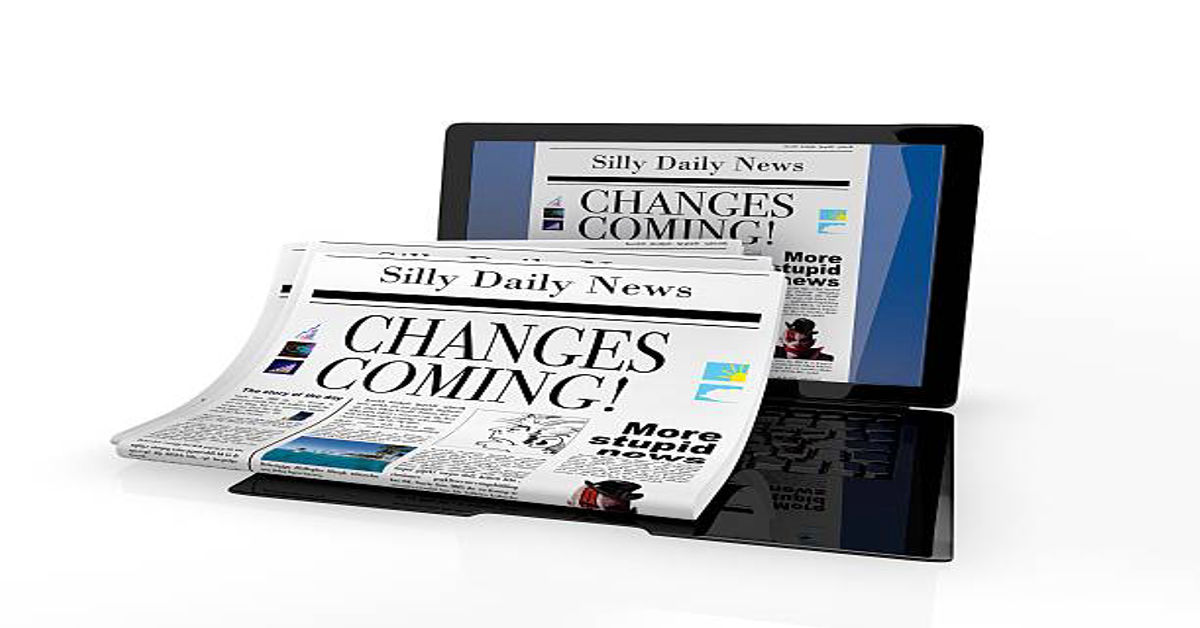Before It’s News: Changing Face of Journalism in the Digital Age
In a world where information flows faster than ever before, the line between professional journalism and public participation in news creation is becoming increasingly blurred. One of the most prominent symbols of this transformation is the concept of “Before It’s News” — a term that not only refers to a platform but also represents a powerful idea in modern communication: citizen-driven journalism.
This article takes a deep, original, and thoughtful look at what “Before It’s News” truly stands for, how citizen journalism has evolved, what impact it has on society, and why this movement reflects the next great evolution of how humanity shares truth, perception, and knowledge.
The Concept Behind “Before It’s News”
At its core, “Before It’s News” represents the power of people-led reporting. It is an online ecosystem where individuals, not large corporations, can contribute their stories, opinions, analyses, and discoveries. It operates under the idea that every person is a potential reporter and that the truth is not solely owned by traditional media organizations.
In simple terms, it is a form of open-source journalism — where stories are not filtered through editorial hierarchies but are instead published directly by contributors. This directness makes the idea both revolutionary and controversial. On one hand, it gives a voice to independent thinkers, researchers, and witnesses who may not otherwise have a platform; on the other, it also raises questions about credibility and verification.
“Before It’s News” reflects the growing sentiment that people crave authenticity over polish. They want to hear from those who were present, those who experienced events firsthand, and those who are willing to challenge the dominant narrative.
The Evolution of News Sharing
To understand the significance of the “Before It’s News” movement, one must first look at how news itself has evolved over centuries.
| Era | Primary Medium | Information Flow | Control Over Content |
|---|---|---|---|
| Print Age (1600s–1900s) | Newspapers, pamphlets | Slow and localized | Centralized (editors, publishers) |
| Broadcast Age (1920s–1990s) | Radio, television | National reach, faster updates | Corporate and governmental control |
| Internet Age (1990s–2010s) | Websites, email | Global and immediate | Mixed – more democratized |
| Citizen Journalism Age (2010–Present) | Blogs, social platforms | Instant, user-driven | Decentralized (anyone can publish) |
This timeline illustrates how technological progress has consistently chipped away at institutional gatekeeping. “Before It’s News” emerges as the logical next step in this trajectory — an era where every voice has a microphone.
The Core Principles of Citizen Journalism
“Before It’s News” thrives on several guiding principles that separate it from traditional journalism. Understanding these principles helps in appreciating both its potential and its limitations.
- Freedom of Expression:
Every individual should have the right to express their views and share information without corporate or political interference. - Decentralization of Authority:
News is no longer dictated by a few networks. Authority shifts from institutions to audiences, who decide what matters. - Transparency and Raw Access:
Instead of polished reports, citizen journalism provides raw footage, unfiltered opinions, and firsthand witness accounts. - Community Verification:
The responsibility of checking facts moves from editors to readers, creating a participatory model of accountability. - Inclusivity and Diversity:
“Before It’s News” enables people from all walks of life — regardless of education or profession — to share perspectives.
These principles redefine the dynamics of power between the storyteller and the listener.
Why People Turn to Citizen News Sources
In today’s media landscape, the public often perceives mainstream outlets as heavily influenced by political agendas or corporate sponsors. In contrast, citizen platforms like “Before It’s News” appeal to those seeking alternative viewpoints.
Key Reasons for the Shift:
| Reason | Description |
|---|---|
| Distrust in Mainstream Media | Many readers feel that traditional outlets prioritize sensationalism or political bias. |
| Speed of Information | Citizen journalists often break stories before large media networks react. |
| Accessibility | Anyone with an internet connection can contribute or read content freely. |
| Diversity of Voices | Allows marginalized or underrepresented communities to share their truths. |
| Transparency and Interaction | Audiences can directly comment, challenge, and engage with authors. |
This shift reflects a larger cultural desire: the need to be informed directly rather than selectively.
The Challenges of Open-Source News Platforms
While empowering, the concept of “Before It’s News” also comes with serious challenges that the digital age must learn to navigate responsibly.
- Verification and Accuracy:
Without professional editors or fact-checkers, misinformation can spread quickly. Readers must practice critical thinking. - Echo Chambers:
People tend to follow voices that align with their existing beliefs, which can limit exposure to diverse opinions. - Accountability:
In traditional media, errors are corrected publicly. In open platforms, correction mechanisms are less structured. - Monetization Pressure:
Some contributors may sensationalize content for clicks or visibility. - Information Overload:
The flood of content makes it difficult to identify credible sources.
Despite these challenges, the system’s self-correcting nature often allows truth to emerge over time, as readers debate, research, and refine collective understanding.
How “Before It’s News” Works as a Platform
The structure of a citizen-driven platform typically includes these core functions:
| Function | Purpose | Example of Application |
|---|---|---|
| User Submission | Allows contributors to post articles directly | Independent writers or eyewitnesses upload content |
| Community Voting or Sharing | Highlights popular or trending stories | Readers share on social media |
| Categorization | Organizes stories by topic | Politics, science, environment, spirituality, etc. |
| Reader Feedback | Enables comment sections for debate | Encourages open dialogue |
| Author Profiles | Builds credibility over time | Reputable contributors gain followers |
This participatory design is what makes such platforms dynamic and alive — constantly evolving through audience interaction.
The Philosophical Foundation: Information Belongs to Everyone
The philosophy behind “Before It’s News” is grounded in one radical idea: information is not a commodity, it’s a shared human resource.
Throughout history, those who controlled information controlled power — kings, churches, governments, and later, corporations. The digital revolution, however, disrupted this hierarchy. Now, a person with a smartphone can record history as it unfolds, post it online, and reach millions.
This concept redefines journalism as not just a career, but as a social function — the act of witnessing and sharing truth. “Before It’s News” thus becomes a collective newsroom without walls, where everyone is both reporter and audience.
Ethics in Citizen Journalism
Ethics play an essential role in maintaining the credibility of open platforms. Unlike traditional journalists, citizen reporters often don’t have formal training. Therefore, ethical awareness becomes a shared responsibility among contributors and readers.
Core Ethical Practices for Citizen Reporters:
- Report only what you can verify or witness directly.
- Always cite original sources or provide clear disclaimers for opinions.
- Avoid using misleading headlines.
- Respect privacy and dignity of subjects.
- Update stories as new information emerges.
When followed collectively, these practices strengthen the trustworthiness of independent reporting communities.
The Role of Technology in Citizen Journalism
Modern technology has amplified the reach and impact of platforms like “Before It’s News.” With smartphones, social media, and real-time streaming, ordinary people can document world events as they happen. Artificial intelligence tools also assist in verifying visuals, analyzing metadata, and flagging misleading content.
Additionally, blockchain technology shows potential for securing news authenticity. Imagine each published article being permanently timestamped, proving authorship and preventing tampering — such innovations could make citizen journalism even more transparent and trustworthy.
The Relationship Between Traditional Media and Citizen Journalism
Contrary to popular belief, citizen journalism and traditional media need not be rivals; they can coexist symbiotically.
| Aspect | Traditional Media | Citizen Journalism |
|---|---|---|
| Structure | Hierarchical | Decentralized |
| Speed | Moderate | Instantaneous |
| Verification | Strong editorial process | Reader-based validation |
| Perspective | Often institutional | Personal and diverse |
| Reach | Broad but limited by resources | Global and unlimited |
In many instances, professional journalists now rely on eyewitness reports from citizen journalists to build early-stage coverage. Likewise, citizens benefit from professional fact-checking once the story gains mainstream traction. Together, they form a more complete media ecosystem.
The Social Impact of “Before It’s News”
Citizen journalism has deeply influenced how societies think, act, and hold power accountable. Its effects include:
- Greater Political Awareness: People now have access to multiple viewpoints, leading to informed civic participation.
- Disaster Response: During crises, eyewitnesses provide critical updates faster than traditional media.
- Cultural Exchange: Individuals share stories that humanize global communities.
- Accountability and Transparency: Governments and corporations are under constant public scrutiny.
- Empowerment: Every person can document injustice and demand change.
The result is a world where communication has become not just faster, but more democratic.
Case Example: A Citizen-Driven News Scenario
Imagine a small town where an unexpected event occurs — perhaps a natural disaster or a major local protest. Before any official media crew arrives, residents begin uploading photos, videos, and accounts. Within minutes, the event gains traction online.
This is the essence of “Before It’s News.” It bridges the time gap between event and coverage. Rather than waiting for a journalist to arrive, the witnesses themselves become the journalists. Over time, professional outlets may build upon these initial reports, but the credit for the first signal of awareness belongs to the citizens.
Criticisms and Controversies
Of course, “Before It’s News” and similar platforms often face criticism for hosting unverified claims or speculative theories. However, it’s crucial to understand that this is an inherent risk in open-source environments. The solution is not censorship but media literacy — teaching readers to think critically, cross-reference sources, and identify bias.
Instead of dismissing citizen journalism, society should focus on improving education around evaluating information quality. A healthy digital society balances freedom of speech with responsible interpretation.
Education and Media Literacy: The Key to the Future
For the “Before It’s News” philosophy to thrive responsibly, education must evolve. Schools and institutions should teach digital literacy — not merely how to consume media but how to question it.
Essential media literacy skills include:
- Distinguishing facts from opinions.
- Identifying emotional or manipulative language.
- Verifying sources independently.
- Understanding algorithms and echo chambers.
- Respecting different perspectives without hostility.
By cultivating critical thinking, the audience itself becomes the editor-in-chief of its own reality.
Future Trends of Citizen Journalism
Looking ahead, “Before It’s News” and similar movements will likely shape the next generation of media in several ways:
- Integration with AI Tools: Automated verification systems will help flag questionable content while preserving freedom of speech.
- Micro-Communities: Smaller, topic-based groups will emerge for more focused reporting.
- Augmented Reality (AR) Reporting: On-site witnesses could provide immersive visual coverage using wearable devices.
- Data-Driven Citizen Reports: Citizens may use public data to expose corruption or inefficiency.
- Global Collaboration: Cross-border teams of ordinary people will collaborate on major stories, blurring the line between professional and amateur journalism entirely.
These innovations will push humanity toward a more participatory, transparent, and interconnected communication era.
The Ethical Future of “Before It’s News”
The next chapter of citizen journalism will require balance — between openness and accuracy, between free expression and social responsibility. Technology can help, but the human conscience remains the ultimate safeguard of truth.
As the saying goes: with great power comes great responsibility. Each individual who publishes a story participates in shaping collective understanding. Therefore, honesty, empathy, and curiosity must guide this evolving journalistic landscape.
Conclusion
“Before It’s News” is more than just a digital platform; it is a cultural movement symbolizing humanity’s desire to take control of its own narrative. It represents freedom, participation, and transformation — a world where anyone can be a storyteller and every story can spark change.
The movement redefines journalism from a profession into a shared human practice. It empowers ordinary citizens to contribute extraordinary perspectives. In doing so, it restores the original spirit of journalism: to seek truth, give voice to the voiceless, and connect people through understanding.
While it presents challenges of verification and responsibility, its long-term promise is undeniable — a society where news belongs not to corporations or governments, but to everyone. “Before It’s News” reminds us that in the age of information, silence is no longer the default. Everyone has a story, and every story matters.
FAQs
1. What does “Before It’s News” mean in modern journalism?
It represents the rise of citizen journalism — a decentralized form of reporting where anyone can publish or share news directly.
2. How is it different from traditional media?
Unlike traditional outlets controlled by editors and corporations, it’s open, user-driven, and often publishes raw, firsthand accounts.
3. Is content on citizen journalism platforms reliable?
Reliability varies by author. Readers must apply critical thinking, verify information, and cross-reference multiple sources.
4. What are the benefits of citizen-led reporting?
It democratizes information, increases transparency, and allows marginalized voices to be heard without editorial suppression.
5. What is the future of platforms like “Before It’s News”?
They’ll likely merge with AI verification and blockchain for authenticity, leading to more credible, decentralized journalism systems.







